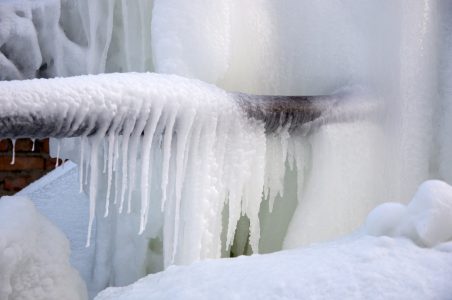What are your thoughts on How to prepare your home plumbing for winter weather?

Winter can ruin your plumbing, especially by freezing pipelines. Below's exactly how to stop it from occurring and what to do if it does.
Intro
As temperatures decrease, the risk of frozen pipelines rises, potentially leading to expensive repairs and water damages. Understanding just how to stop icy pipes is important for property owners in chilly environments.
Avoidance Tips
Shielding prone pipes
Wrap pipelines in insulation sleeves or utilize warmth tape to shield them from freezing temperature levels. Focus on pipes in unheated or exterior locations of the home.
Home heating methods
Keep interior spaces sufficiently heated, particularly areas with pipes. Open cupboard doors to allow warm air to circulate around pipes under sinks.
How to determine frozen pipes
Look for lowered water flow from taps, uncommon smells or noises from pipelines, and visible frost on revealed pipes.
Long-Term Solutions
Structural changes
Think about rerouting pipes far from outside walls or unheated locations. Include additional insulation to attics, basements, and crawl spaces.
Updating insulation
Buy high-grade insulation for pipelines, attic rooms, and wall surfaces. Appropriate insulation assists preserve consistent temperatures and lowers the risk of frozen pipes.
Shielding Exterior Plumbing
Yard tubes and outside taps
Separate and drain garden pipes before wintertime. Mount frost-proof spigots or cover outside taps with insulated caps.
Comprehending Icy Pipes
What creates pipes to ice up?
Pipes freeze when revealed to temperatures listed below 32 ° F (0 ° C) for expanded periods. As water inside the pipes ices up, it expands, taxing the pipeline wall surfaces and possibly triggering them to burst.
Risks and damages
Icy pipes can lead to supply of water disturbances, property damage, and pricey repairs. Burst pipes can flood homes and trigger considerable architectural damage.
Signs of Frozen Pipeline
Determining icy pipes early can avoid them from bursting.
What to Do If Your Pipelines Freeze
Immediate actions to take
If you believe icy pipelines, maintain taps open to alleviate stress as the ice melts. Utilize a hairdryer or towels taken in warm water to thaw pipelines slowly.
Conclusion
Avoiding frozen pipelines calls for aggressive measures and quick responses. By understanding the causes, signs, and preventive measures, house owners can secure their pipes throughout cold weather.
5 Ways to Prevent Frozen Pipes
Drain Outdoor Faucets and Disconnect Hoses
First, close the shut-off valve that controls the flow of water in the pipe to your outdoor faucet. Then, head outside to disconnect and drain your hose and open the outdoor faucet to allow the water to completely drain out of the line. Turn off the faucet when done. Finally, head back to the shut-off valve and drain the remaining water inside the pipe into a bucket or container. Additionally, if you have a home irrigation system, you should consider hiring an expert to clear the system of water each year.
Insulate Pipes
One of the best and most cost-effective methods for preventing frozen water pipes is to wrap your pipes with insulation. This is especially important for areas in your home that aren’t exposed to heat, such as an attic. We suggest using foam sleeves, which can typically be found at your local hardware store.
Keep Heat Running at 65
Your pipes are located inside your walls, and the temperature there is much colder than the rest of the house. To prevent your pipes from freezing, The Insurance Information Institute suggests that you keep your home heated to at least 65 degrees, even when traveling. You may want to invest in smart devices that can keep an eye on the temperature in your home while you’re away.
Leave Water Dripping
Moving water — even a small trickle — can prevent ice from forming inside your pipes. When freezing temps are imminent, start a drip of water from all faucets that serve exposed pipes. Leaving a few faucets running will also help relieve pressure inside the pipes and help prevent a rupture if the water inside freezes.
Open Cupboard Doors
Warm your kitchen and bathroom pipes by opening cupboards and vanities. You should also leave your interior doors ajar to help warm air circulate evenly throughout your home.

Do you enjoy more info about How to prepare your home plumbing for winter weather? Give a remark down the page. We would be happy to find out your feelings about this blog posting. Hoping that you visit us again in the future. Do you know another individual who is serious about the topic? Please feel free to share it. Thank you for being here. Return soon.
Go Services